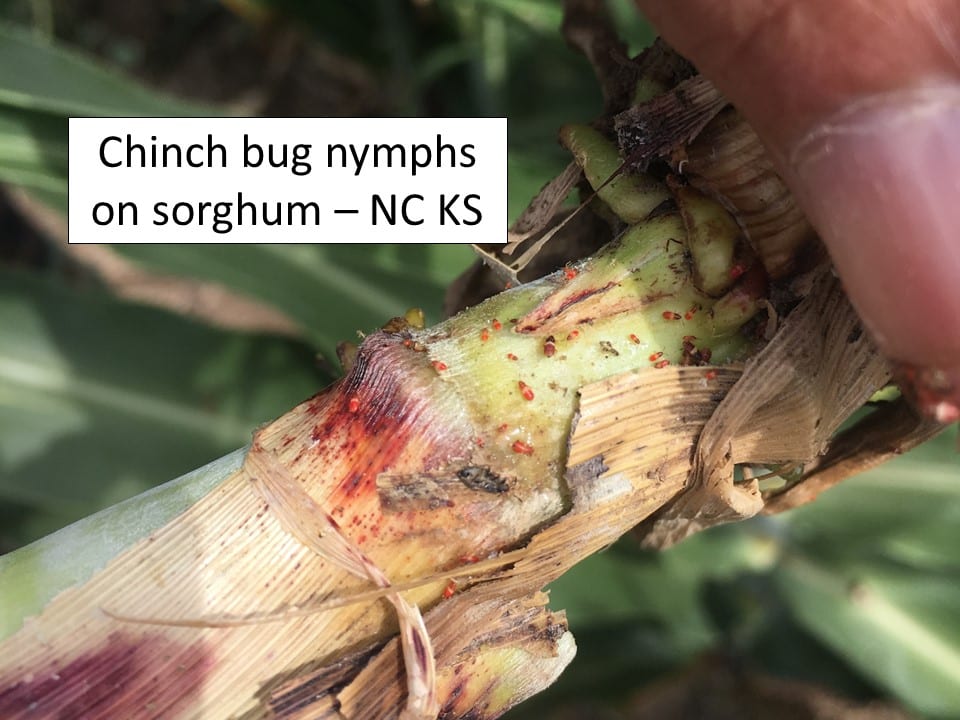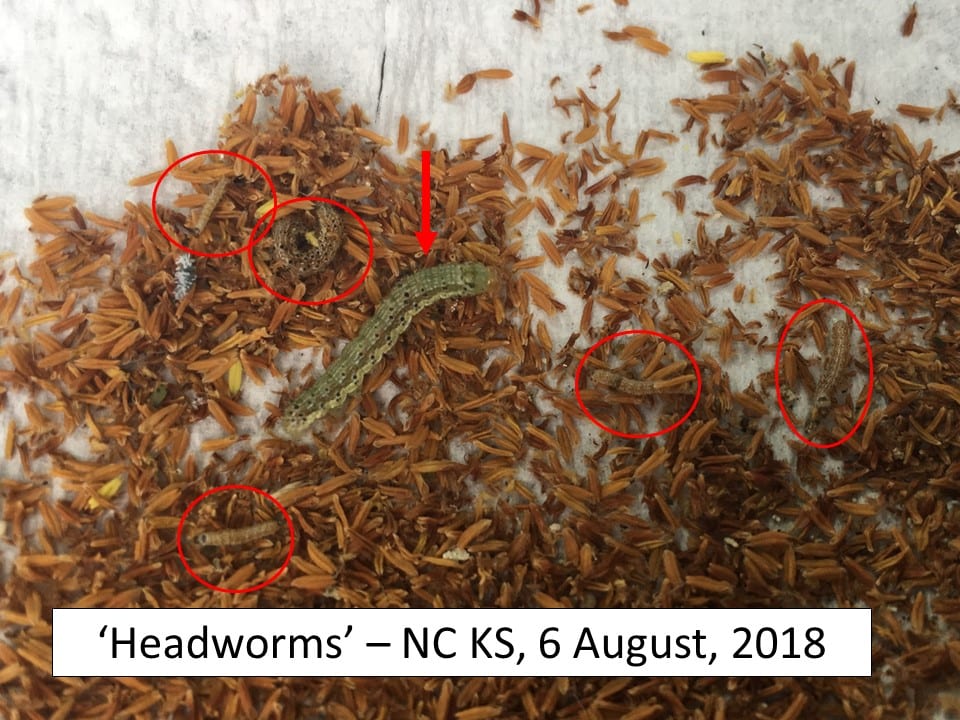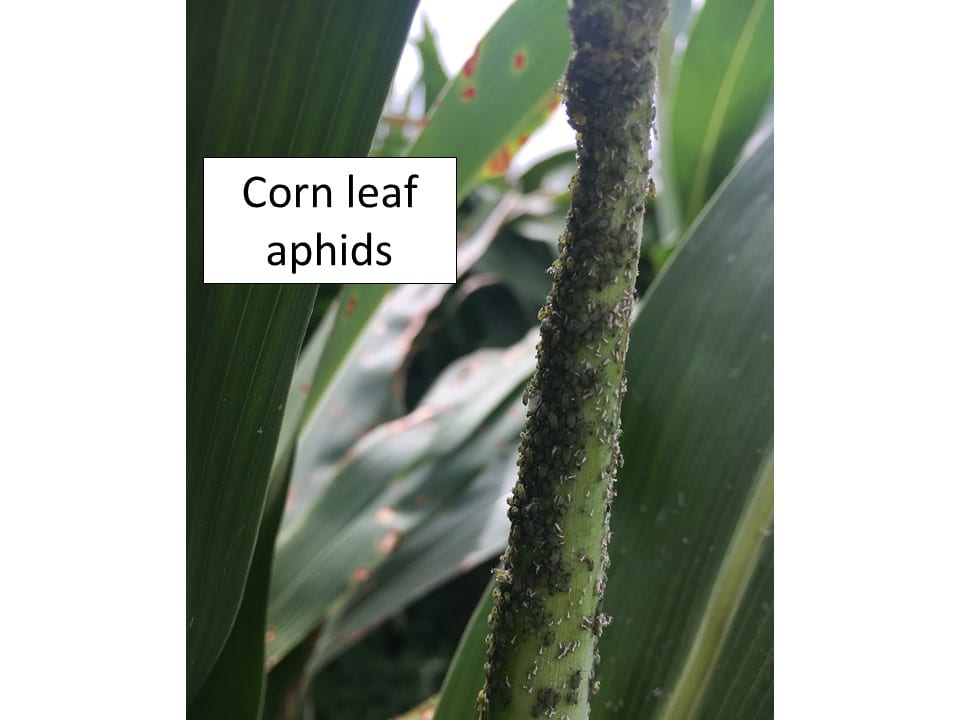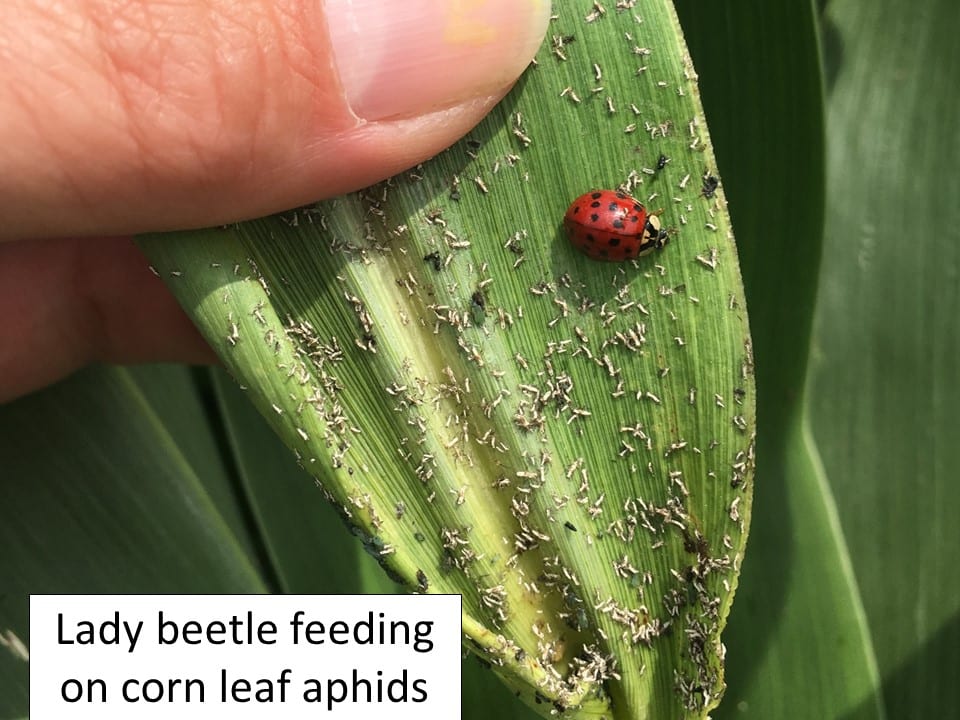–by Dr. Jeff Whitworth and Dr. Holly Davis
Chinch bug populations continue to increase dramatically throughout north central Kansas. Adults are still active, mating and ovipositing in both the developing heads and around the base of plants. There are also large numbers of nymphs, mainly feeding in and around the base of plants, but some are on the developing kernels. The significant populations of chinch bugs, along with continued hot and dry conditions, are causing some plants to lodge as the stalks dry down prematurely.
‘Headworms’, both fall armyworms and corn earworms, are also very common in all the fields we sampled that were in the flowering stages. On 6 August, there were all different sizes of larvae detected in heads. Many fields throughout north central Kansas are just starting to reach the reproductive stages, so these ‘headworms’ will continue to be problematic in any field that is in the flowering to soft dough stage. Past research has indicted that ‘headworms’ may cause approximately 5% loss/worm/head. It is important to sample in a timely manner to detect these pests while they are still small, before most of the feeding damage has been done.
Corn leaf aphids (CLA) continue to cause considerable concern throughout north central Kansas as these populations are still very widespread and become more apparent as the heads start to extend out of the whorl. However, there are many beneficials present as well. CLA should have little to no negative impact on plant development or yield other than potentially a few individual plants.
For more information relative to sorghum insect management, please see the 2018 Sorghum Insect Management Guide: https://www.bookstore.ksre.ksu.edu/pubs/mf742.pdf




